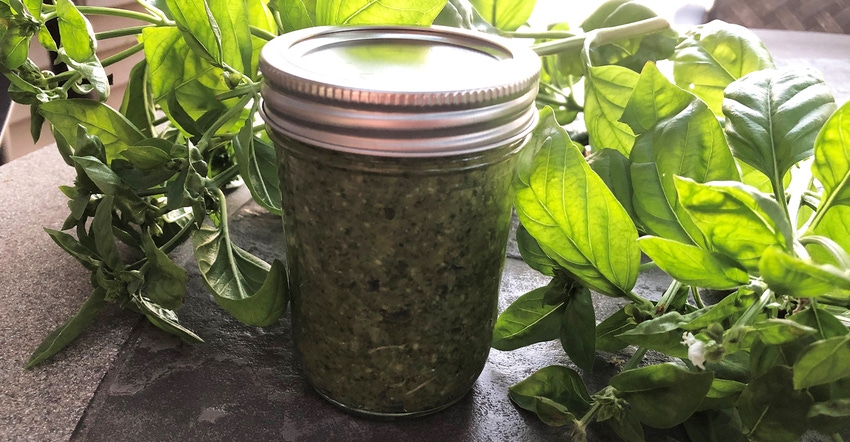August 15, 2019

I feel closest to my late mother when I’m working in the kitchen — especially when it’s summertime, and I’m harvesting something from my garden. Mom preferred freezing her sweet corn and green beans over canning them. But when the sweet corn was ready, it was a family project with all hands on deck — even after we were married with our own family.
When the sweet corn was ready, we would all come, no matter what we had to cancel. My father and brother would pick the sweet corn in the cool of the morning; then Mom and I would clean it, blanch it and put it in plastic bags for freezing. If we could persuade a few friends to help, all the better.
Sweet corn was just the beginning. There were strawberries and blueberries in the freezer, as well as green beans, asparagus — whatever grew well that year. Long before sustainability was in vogue, Mom would freeze leftover bananas (peeled) for later use in banana bread, and finely chop the abundant zucchini to use in chocolate zucchini cake or zucchini bread.
If Mom were still here, she’d be helping me with the abundance of basil I have growing on my patio. My latest project is growing herbs, especially basil.
If using fresh herbs seems daunting, here’s a couple of tips. Add them at the end of a dish, and be generous. Herbs are an easy way to give low-calorie flavor to many dishes. Add fresh dill to salmon on the grill or a bit of mint to strawberries. Herbs can elevate a dish from the ordinary to something special.
I rinse them, dry them, stack them together, and then roll them as tight as I can before cutting the roll with a sharp knife and separating the strips of herbs. This is called “chiffonade,” a fancy term for a slicing technique in which leafy green vegetables such as spinach, sorrel or Swiss chard, or a flat-leafed herb like basil, are cut into long, thin strips. I use the technique on all my herbs.
Use a sharp knife or herb scissors when chopping fresh herbs so you cut rather than crush the delicate leaves. Crushing leads to bruised, blackened herbs. If you’d like to use fresh herbs instead of dried herbs in a recipe, add three to four times more fresh herbs than the recipe calls for, and add them at the end.
My friend taught me how to transform fresh basil into a pesto that can be used with pasta, chicken, fish, turkey burgers and scrambled eggs, on pizza and bruschetta, and even as a sandwich spread and in a fancy grilled cheese.
The basil pesto sauce is made with basil leaves, pine nuts, garlic, olive oil and Parmesan cheese. It’s quick, easy and wonderful to pull out of the freezer for a quick dinner. Take out a scoop or two, and add it to pasta with strips of grilled chicken for a wonderful meal.
My favorite recipe for basil pesto is from “The Joy of Cooking,” a well-used cookbook that Mom loved.
Basil Pesto
2 cups loosely packed basil leaves
½ cup grated Parmesan
p pine nuts, hazelnuts, almonds or a combination
2 medium garlic cloves, peeled
½ cup olive oil, or as needed
Salt and black pepper
Combine basil leaves, parmesan, pine nuts and garlic cloves in food processor and process to rough paste. With machine running, slowly add olive oil. If pesto seems dry (it should be a thick paste), add a little more olive oil. Season to taste with salt and black pepper.
Use immediately or pour into jelly jars and pour a very thin film of olive oil over the top. Cover with plastic wrap and refrigerate up to one week.
You can also freeze in the jars (cover top with plastic wrap) or freeze in ice cube trays, covered. Knock out for storing into a zip-top bag and freeze for up to three months. Doubling the recipe will fill up an ice cube tray. One cube can be easily snatched from the freezer and tossed into a freshly boiled pot of pasta or dissolved into a batch of minestrone.
Fargo is a dietitian for Hy-Vee in Springfield, Ill. Send recipe ideas to her at [email protected].
About the Author(s)
You May Also Like






